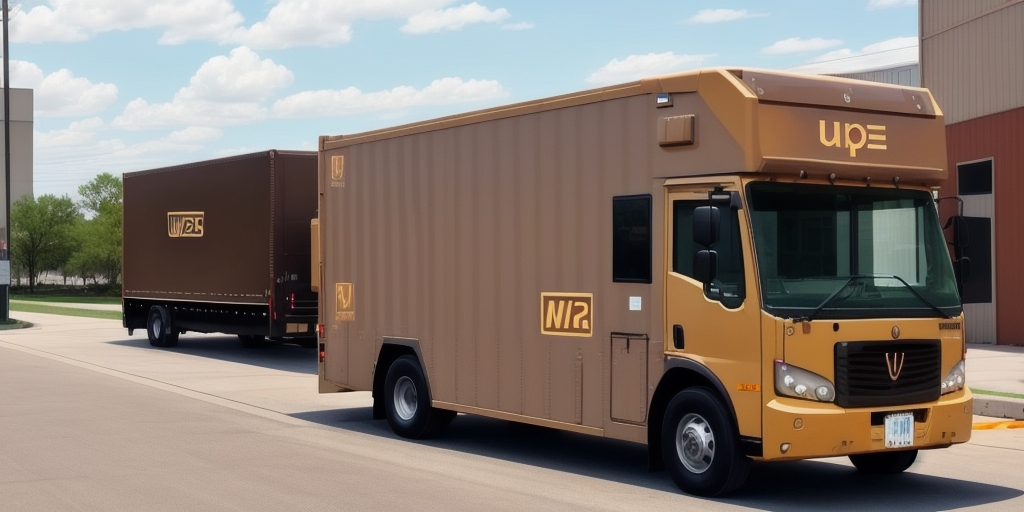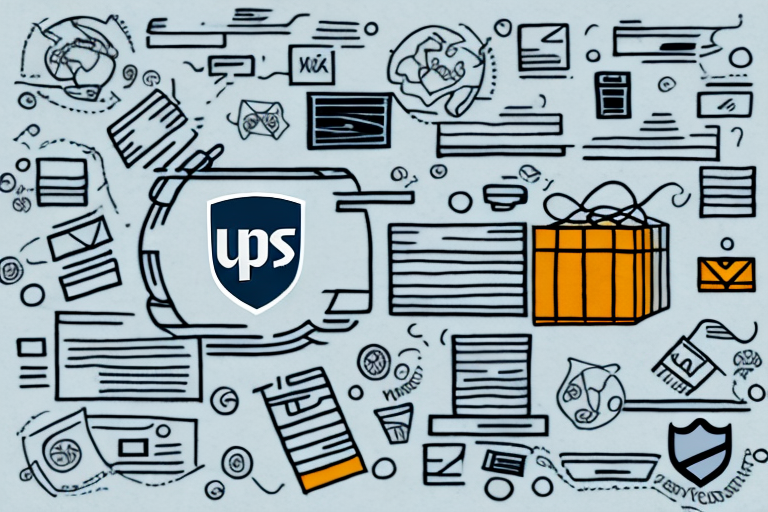Understanding and Optimizing UPS Shipping Business Rates
If you're running a business that involves shipping products to customers, it's essential to understand the shipping rates charged by different carriers. Among the many options available, UPS is one of the most popular shipping carriers due to its vast network, reliability, and range of services. However, understanding how UPS shipping business rates are calculated and what factors impact them is crucial for making informed decisions and optimizing your shipping costs.
How UPS Shipping Business Rates Are Calculated
UPS determines the cost of shipping a package based on several key factors:
- Package Weight: Heavier packages incur higher shipping costs.
- Package Dimensions: Larger packages may be subject to dimensional weight pricing.
- Destination: Shipping to farther zones increases the cost.
- Delivery Speed: Faster delivery options come at a premium price.
UPS employs a zone-based pricing model, meaning the farther the package needs to travel, the higher the cost. Additionally, packages that are heavier or larger require more resources for handling and transportation, thus increasing the shipping rate.
Zone-Based Pricing Explained
UPS divides regions into different zones. The shipping rate increases as the zone number increases, reflecting the distance and logistical complexity involved in delivering to higher-numbered zones. For detailed zone maps and rate calculators, visit the UPS Developer Kit.
Factors Affecting UPS Shipping Business Rates
Beyond the basic factors, several other elements can influence UPS shipping rates:
- Package Value: Higher-value items may attract additional fees for added security.
- Declared Value: Declaring a higher value increases insurance costs.
- Insurance: Full insurance coverage for high-value items results in higher shipping costs.
- Special Handling: Packages requiring special handling, such as hazardous materials or fragile items, incur extra fees.
- Seasonality: Peak seasons like holidays may see increased shipping rates due to higher demand.
- Volume Discounts: Businesses shipping large volumes may qualify for discounted rates.
Declared Value and Insurance
Declaring a higher value for your shipments provides additional protection but at an increased cost. It's essential to balance the need for coverage with the associated expenses. For more information on declared value and insurance options, refer to the UPS Shipping Insurance page.
The Role of Package Weight in UPS Shipping Rates
Package weight is a significant determinant of UPS shipping rates. UPS's pricing model charges more for heavier packages, with a maximum weight limit of 150 pounds per package. Exceeding this limit results in additional fees or the need for alternative shipping methods.
To optimize shipping costs:
- Accurately weigh your packages.
- Use packaging materials that are both sturdy and lightweight.
- Consider reducing product weight by using lighter materials or smaller sizes.
Impact of Package Dimensions on UPS Shipping Rates
UPS also factors in the dimensions of your package through a dimensional weight pricing model. This model ensures that bulky but lightweight packages are priced based on their volume rather than just their weight.
Dimensional Weight Calculation: Length x Width x Height ÷ Dimensional Weight Divisor (varies by service level and destination).
To minimize costs:
- Measure packages accurately.
- Choose appropriate box sizes to minimize empty space.
- Use specialized packaging like envelopes or tubes when suitable.
Destination's Effect on UPS Shipping Rates
The destination of your package plays a crucial role in determining shipping costs. UPS uses a zone-based system where the distance between the origin and destination determines the shipping rate.
To manage costs effectively:
- Use UPS's Rate Calculator to estimate costs based on your specific origin and destination.
- Consider consolidating shipments to reduce the number of zones crossed.
Delivery Speed and Its Relationship with UPS Shipping Rates
Delivery speed is directly proportional to shipping costs. UPS offers various delivery options, ranging from same-day delivery to economy ground shipping. Faster delivery options result in higher costs.
Strategies to balance speed and cost:
- Select delivery speeds that meet customer expectations without unnecessary premiums.
- Use UPS's Time and Cost Calculator to compare different shipping options.
- Encourage customers to choose slower shipping methods for non-urgent deliveries to benefit from lower rates.
Comparing UPS Shipping Rates with Competitors
UPS isn't the only carrier available for business shipping. Competitors like FedEx and USPS also offer competitive shipping services. Comparing rates across these carriers involves evaluating various factors such as weight, dimensions, destination, delivery speed, and additional fees.
To make an informed decision:
- Use third-party tools or shipping software to compare rates efficiently.
- Consider the overall service quality, including reliability and delivery speed.
- Evaluate the additional services offered by each carrier, such as tracking and insurance.
Tips for Reducing UPS Shipping Business Rates
Effective strategies can help businesses minimize their UPS shipping costs:
- Negotiate Better Rates: High-volume shippers can negotiate discounts directly with UPS or through third-party logistics providers.
- Optimize Packaging: Use the right materials and sizes to reduce weight and dimensional costs.
- Utilize UPS's Online Tools: Tools like rate calculators and shipment tracking can help manage and reduce costs.
- Avoid Additional Fees: Ensure accurate addresses and proper documentation to prevent unexpected charges.
Negotiating Shipping Rates
Businesses with substantial shipping volumes have leverage to negotiate better rates. Approach UPS with a clear understanding of your shipping patterns and volume to secure favorable terms.
Understanding Additional Fees and Surcharges
UPS shipping rates may include various additional fees and surcharges, including:
- Fuel Surcharge: Adjusts based on current fuel prices.
- Address Correction: Applies when destination addresses are incorrect or incomplete.
- Residential Delivery: Extra charges for deliveries to residential locations.
- Oversize Package: Fees for packages exceeding UPS size limits.
- Hazardous Materials: Additional costs and safety protocols for hazardous shipments.
- Customs Fees: Applicable for international shipments crossing borders.
For a comprehensive list of surcharges, visit UPS Shipping Rates & Rules.
Negotiating Better UPS Shipping Rates for Small Businesses
Small businesses can implement several strategies to negotiate more favorable UPS shipping rates:
- Understand Your Shipping Needs: Analyze shipping patterns and volumes to identify negotiation points.
- Research and Compare: Benchmark UPS rates against competitors to strengthen your negotiation position.
- Present Compelling Arguments: Highlight your business’s shipping volume, loyalty, and growth potential.
- Be Open to Concessions: Offer commitments such as exclusive use of UPS or minimum shipping volumes in exchange for discounts.
- Get Agreements in Writing: Ensure all negotiated terms are documented clearly to avoid future discrepancies.
For more negotiation tips, refer to industry resources such as the American Express Guide on Negotiating Freight Rates.
Navigating International UPS Shipping Rates
International shipping introduces additional complexities, including customs regulations, international tariffs, and varying delivery times. UPS offers specialized international services to help businesses manage these challenges effectively:
To streamline international shipping:
- Utilize UPS’s customs brokerage services.
- Ensure compliance with international shipping regulations.
- Use shipping software to manage international orders efficiently.
The Benefits of Technology in Managing UPS Shipping Rates
Leveraging technology can significantly enhance your ability to manage and optimize UPS shipping rates:
- Shipping Software: Automates label creation, rate comparison, and shipment tracking.
- Shipping APIs: Integrate UPS shipping functionalities directly into your e-commerce platform.
- Shipping Platforms: Centralize shipping operations, providing analytics and optimization tools.
Benefits of using technology:
- Efficiently compare and select the best shipping rates and services.
- Automate shipping documentation to reduce errors.
- Real-time tracking and notifications to enhance customer satisfaction.
- Manage shipping volume and analyze historical data for informed decision-making.
- Seamlessly integrate with your existing business systems.
Explore tools like ShipStation or EasyPost for advanced shipping management solutions.
Case Studies: Optimizing UPS Shipping Rates
Real-world examples showcase how businesses have effectively optimized their UPS shipping rates:
- Online Clothing Store: Reduced shipping costs by 15% by negotiating better rates and optimizing packaging, saving over $7,500 annually.
- Small Electronics Retailer: Decreased shipping costs by 20% and increased sales by 10% by using shipping software to optimize packaging and shipping options.
- Global B2B Supplier: Saved up to 40% on customs fees by leveraging UPS’s international shipping solutions and customs brokerage services, resulting in expedited shipments and reduced errors.
These case studies highlight the importance of strategic planning and utilizing available resources to manage and reduce shipping expenses effectively.
Conclusion: Mastering UPS Shipping Business Rates
Understanding UPS shipping business rates is vital for businesses aiming to optimize their shipping costs and enhance operational efficiency. By considering factors such as package weight, dimensions, destination, delivery speed, and additional fees, businesses can make informed decisions that balance cost and service quality. Implementing strategies like negotiating better rates, optimizing packaging, leveraging online tools, and adopting technology solutions can further streamline shipping operations and contribute to significant cost savings.
Stay informed about the latest UPS shipping policies and continuously evaluate your shipping strategies to adapt to changing market conditions and maintain competitive advantage.








